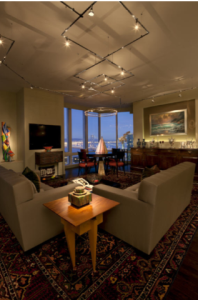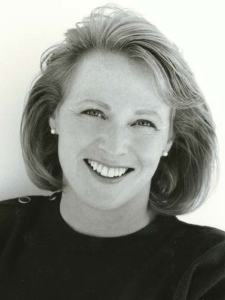Lighting
Lighting designer Nancy McCoy shares the ins and outs of track lighting
Q. What exactly is track lighting and how long has it been around?
A. Track lighting is an incredibly versatile system of lighting that originated in the 1950s. Inspired by the pole light, track lighting is a channel extrusion that contains electrical conductors. Light fixtures can be attached at any location along the extrusion and easily moved. Track lighting is a terrific way to take electricity from a junction box to where you need it, and then connect lighting fixtures anywhere along the extrusion to place light exactly where you want it. Track can be mounted on ceilings, beams, and walls. You can create an unlimited assortment of configurations using T, L, X adjustable angle connectors and stems.
Q. What kinds of track lighting can consumers choose from today?
A. In addition to the 120V and 12V standard track, a modern and very minimal version of track lighting is the low-voltage cable system. Fixtures are attached to two parallel, taut, uninsulated cables three to six inches apart and powered by 12V current. Also, a more recent development is rail lighting. The low-voltage powered metal extrusion can be bent into curves creating an even wider array of configurations. A wide assortment of fixtures and decorative pendants can be attached to any of these systems.
Q. What sources can be used in track lights?
A. Almost every light source group has been used on track: incandescent, 120V and 12V halogen, fluorescent, compact fluorescent, metal halide, and now, new LED sources.
Q. What applications is track lighting best suited for? What functions, rooms, and situations?
A. Track lighting is great in places where changes to displays are frequently made, such as retail stores and museums. Track is also suited to places where there is limited access to plenum space—such as concrete, finished wood, and exposed beam ceilings. Track lighting can be used for all the layers of lighting. You can select fixtures for accent lighting, wallwashing, task lighting and general ambient lighting. I have seen track, cable, or rail used in every room in the house. Track can be a quick and inexpensive way to add lighting to a room. Over time, the fixture heads have become smaller and smaller primarily with the use of the MR16 lamp, making the system unobtrusive. Finishes in white, black, bronze, polished aluminum, satin aluminum, and more can make the track disappear or command visual attention.
Q. What are some of the more inventive track lighting installations you’ve seen?

A. One of the more intriguing installations I’ve seen was a rail system with fiber-optic cable integrated into the extrusion. The brightness along the rail really drew attention to the configuration.
In one of my San Francisco projects in a high-rise condominium with concrete ceilings, the
polished chrome rail system became a sculptural form, an adjunct to the owner’s art collection being illuminated. Because of the sparkle emanating from the fixtures, it also became part of the sparkle seen in the city lights outside the window. (Photo credit: Misha Bruk)
Q. What are some trends with track lighting today?
A. With the development of new fixtures utilizing LED sources, it should be interesting to see how the shape of track fixtures might change around the very miniature form of the LED. Track lighting will continue to be a very flexible and very viable lighting system. It’s been around for the last 60 years and I would expect it to be around for at least another 60 more.
 Nancy McCoy is an independent lighting designer working on residential and commercial projects. She works by specifying layers of lights, doesn’t like to see downlights with a lot of glare, and enjoys finding wonderful decorative fixtures to enchant a space. In her 35 years of experience, she has won design awards for her work and has been published in magazines including Fine Home Building, Inspired House, Sunset, Interiors, and Hospitality. She has taught lighting seminars nationally for the American Lighting Association, has spoken at national conferences for NKBA, NAHB, JLC, IES, and ALA. Nancy is also a member of the Illuminating Engineering Society (IES).
Nancy McCoy is an independent lighting designer working on residential and commercial projects. She works by specifying layers of lights, doesn’t like to see downlights with a lot of glare, and enjoys finding wonderful decorative fixtures to enchant a space. In her 35 years of experience, she has won design awards for her work and has been published in magazines including Fine Home Building, Inspired House, Sunset, Interiors, and Hospitality. She has taught lighting seminars nationally for the American Lighting Association, has spoken at national conferences for NKBA, NAHB, JLC, IES, and ALA. Nancy is also a member of the Illuminating Engineering Society (IES).